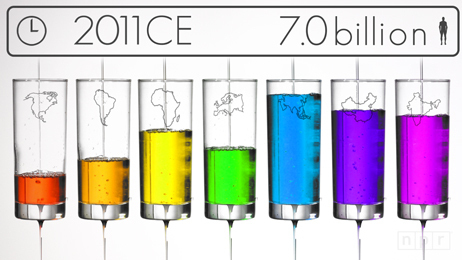"While Germans tend to talk about privacy and how the internet takes away our freedom, chief Almir of the Surui tribe in Brazil came up with an idea when he first came in contact with Google Earth. He saw it as a great tool to visualize the devastation of the rainforest. With the help of Google providing the knowledge and equipment he started the project and provided an unfiltered perspective never seen before. This is a growing project on a growing problem that should matter to all of us. It’s never a service or product itself that matters; it’s what you do with it. Check the video and see for yourself."
Globalization inherently brings serendipitous juxtapositions. In this clip we see the merger of geospatial technologies to protect indigenous cultures and their cultural ecology.



 Your new post is loading...
Your new post is loading...









This is a great example that shows the positive and negative effects of globalization. The negative effects is that the chief Almir and the Surui tribe have changed from their original roots through contact with the outside world. Their language and clothing has been altered because we see the cheif speaking brazilian portugese and the tribe wearing western clothing. The positive aspect is that they are trying to protect their ancient rain forests by using the benefits of globalization. I think its great that Google is helping this tribe, of course Google is getting tons of recognition for this, but they are doing wonders for this group of people. With the technology provided the tribe will be able to be put on the map and educate its group.
this will help protect the forest and decrease deforestation hopefully, also protecting global climate and environment. How does this affect the large companies in paper mills, timber and especially the specialty tree plantations.........roads cutting through the rainforest ......wildlife........
This is an interesting way to educate people around the world of the places that most people don't think about. its interesting to see the technology with the tribes people to see how it actually benefits their folk culture by preserving the land.